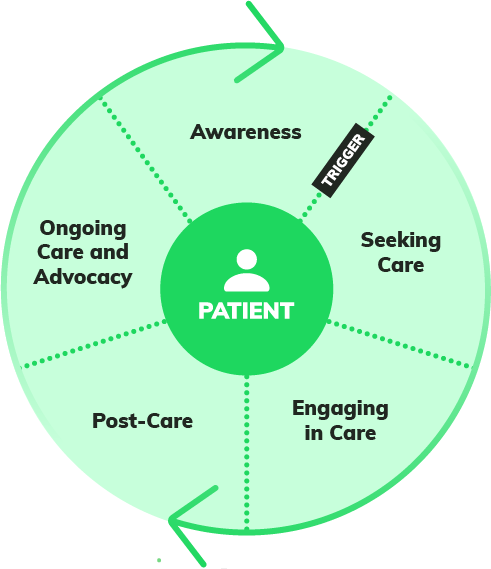Boosting Patient Acquisition Through Brand Awareness
December 8, 2022
December 8, 2022
How can health providers foster patient advocacy, utilize data-driven decisions and create personalized content to drive brand awareness?
The ultimate goal is to not only craft a reputation that becomes a beacon in high-impact healthcare marketplaces, but to also establish a relationship between the patient and provider that’s founded on trust.
Make sure to also get on our list to stay updated with insights.
Spreading the Art of Healing
Consumer expectations have evolved and an organization’s ability to navigate the patient-provider relationship successfully is more critical than ever. So how can healthcare providers become customer-centric versus business-centric?
The first step requires building the patient journey all the way through, from awareness to post-care to advocacy.
While measurement is often seen as the end result, it truly sets the tone for a patient’s entire healthcare journey. Aligning brand value with patient needs can be accomplished through the process of brand activation.
Let’s take a look at the 5 phases of activating a brand for paid, owned and earned channels:





Once providers have a unified company voice that advocates for patients, operational efficiency will improve and brand strategy will evolve into so much more than a simple advertising effort.
The brand activation process can only be conducted with strong data and measurement that break down silos within the organization.
Here’s a quick checklist to establish data-driven decisions:
After providers have orchestrated a robust data and digital ecosystem, it’s time to put this into action through content creation. Content should be leveraged to create personalized experiences that speak to patient needs and preferences.
This requires governance and defined roles. How is content surfaced across channels? How does it relate to audience and business goals? What content will create and reward customer loyalty?
Through customer research conducted during the brand activation process, providers can use that information to create patient personas and set up a communication framework that approaches each audience segment differently. What sets iconic brands apart from other companies, however, is their ability to create an emotional connection to their audience.
Personalized interactions must be had in every stage of the patient lifecycle journey, as seen below.

Success looks different for everyone. As a healthcare provider, accelerating marketing efforts in a personalized and connected way increases the likelihood of success. Ultimately, earning the patient’s trust throughout their journey is a win for any physician or healthcare system.